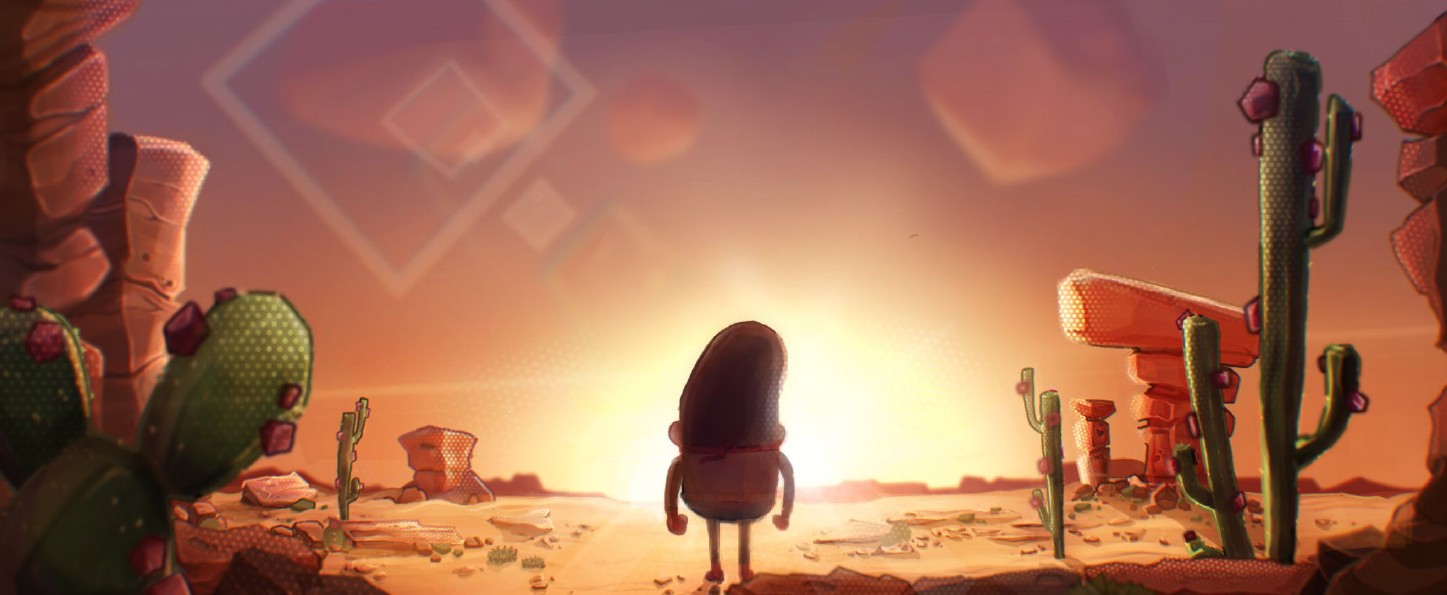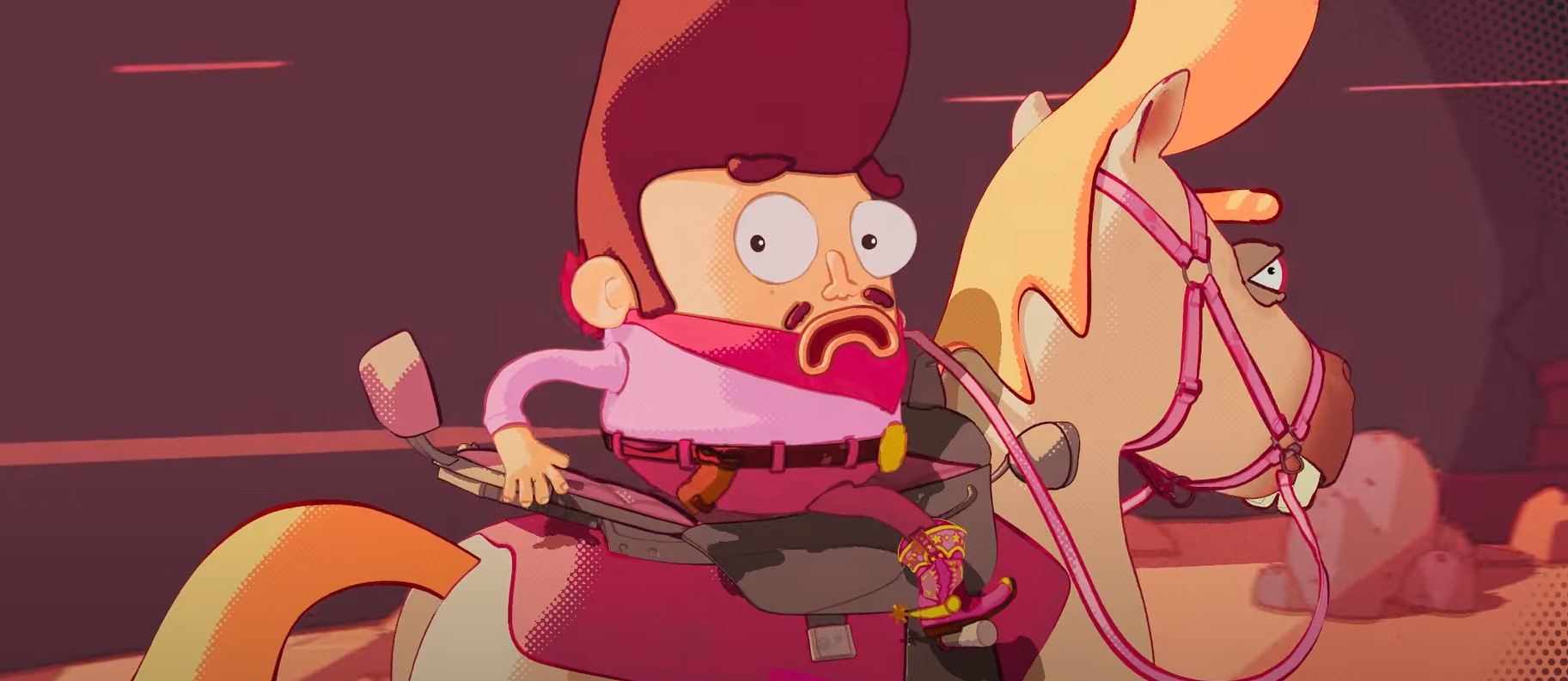A short film with an offbeat tone
Refusing to take off his boots, this dim-witted tenderfoot finds himself hunted down by the entire region, in a hilarious short film that has nothing to envy the most wild cartoons of Hollywood’s golden age. Will Jeff be able to ditch his boots and accept the difference he hides beneath those coveted accessories? That’s what you’ll find out in this hilarious ride from ESMA.
The film was created by the expert hands of Hugo Boyer, Maëlle Degremont, Corentine Dereli, Camille Deremy, Germain Joulaud, Roman Perrin, Jiaqi Zhang and Jules Nouvelot-Giron, who agreed to share his experience with us on this ambitious project, the final film in his 3D animation course.
With him, we look back at the challenges inherent in this type of production, and those of a sector in the throes of change.

Boosting preparation to produce on solid foundations
It’s no secret that the making of an animated short film is prepared well before the first animated image. The Boots and Bounties team understood this, and took great care during the pre-production phase to ensure the smoothest possible flow during the subsequent stages.
“The storyboard was reworked many times to adapt it to the script,” explains Jules Nouvelot-Giron, co-director of storyboard, animation, layout and editing. “In fact, the storyboard was very quickly adapted for animation, to avoid any connection errors.
In a fast-paced film inspired by comics and comic books, it is essential to be able to anticipate narrative developments and duration, and to eliminate shots that do not directly serve the story.
“During this process, we thought long and hard about the mechanics of the boxes, to ensure that they were used in a clear and judicious way. There were many attempts to define the rules they obeyed, but in the end and despite a few cuts, this highly accomplished animation already in motion provided us with a solid base during production, leading to a limited number of iterations.”
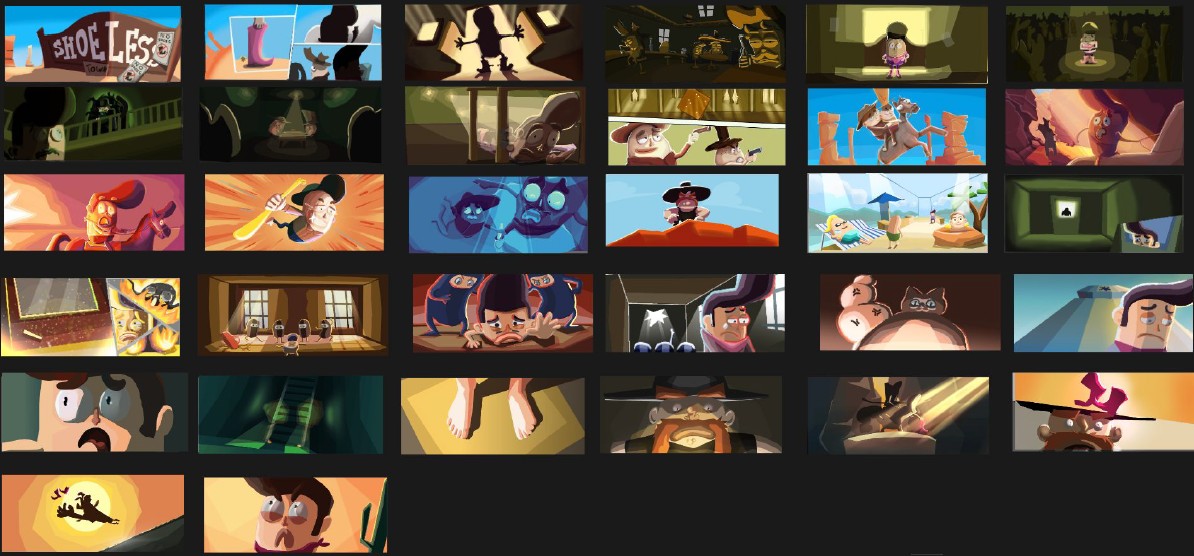
An animatic that, rarely enough to be highlighted, was worked on directly in the editing software provided for the production. So the shots were already timed and in place, ready to be replaced by the final shots. “This upstream work provided a degree of stability both for us and for our composer, who didn’t have to readjust the music countless times. I’d also like to thank Bastien Nectoux for his superb work; the themes he composed for us have always stayed in my head.
Editing was also used to adjust the assembly work done in compositing when necessary,” adds Jules Nouvelot-Giron, who was responsible for editing on this production.
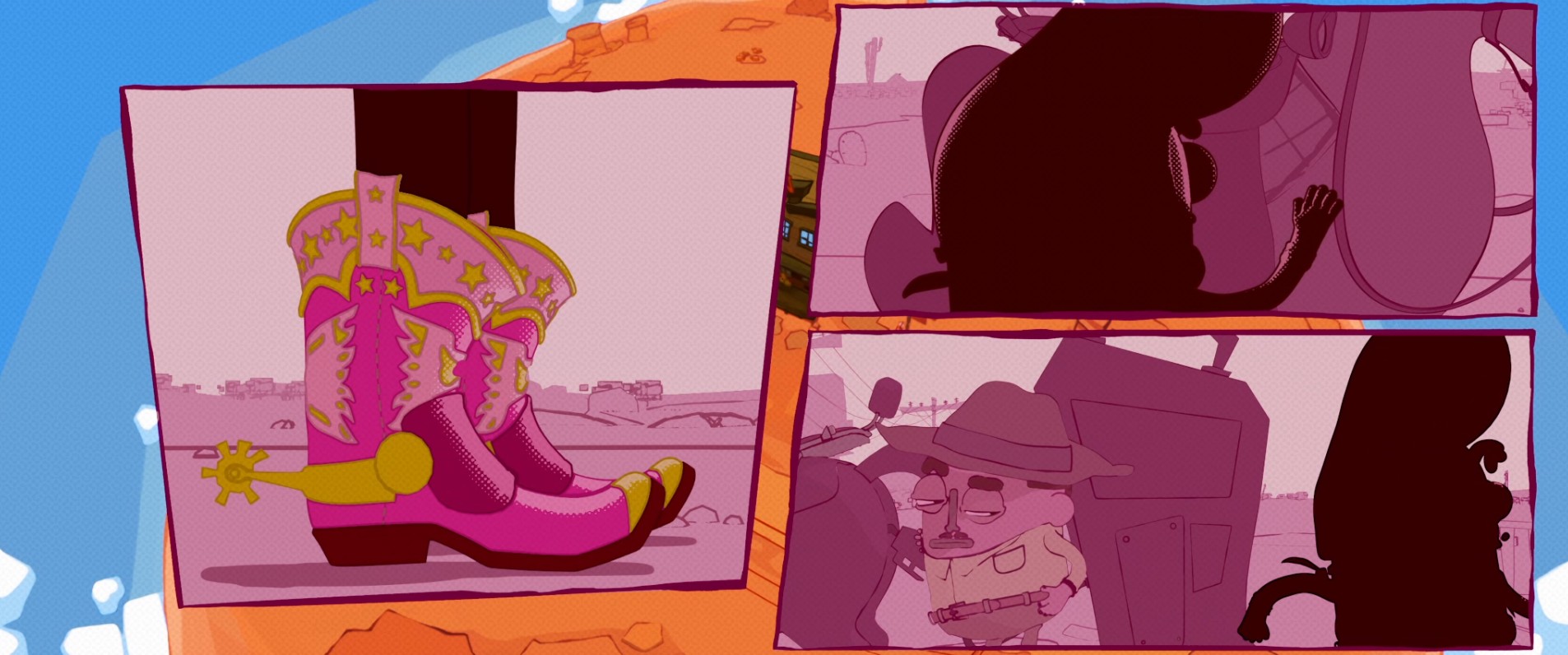
Inspired characters and clear influences
How do you reinvent the western in animation, while mixing 2D/3D styles and striking a resolutely modern and comic tone? That’s the challenge of Boots and Bounties, a challenge met by the team thanks to strong influences drawn from the modern history of international animation.
Jules Nouvelot-Giron claims these influences as his own, citing Le Monde Incroyable de Gumball, the 2010 Cartoon Network series created by Ben Bocquelet, and Illumination’s iconic Minions characters, whose influence can be seen in the design of the grotesque Boots and Bounties characters.

“Initially,” explains Jules Nouvelot-Giron, “we intended to feature female characters. But on the advice of our script teacher and other students, we changed the gender to avoid the humour being perceived as misogynistic mockery.”
From two cowgirls and a sheriff, the team has transformed its main characters to create this rivalry between a sheriff who is ‘right in his boots’ (no pun intended) and Jeff, who is nevertheless well shod.
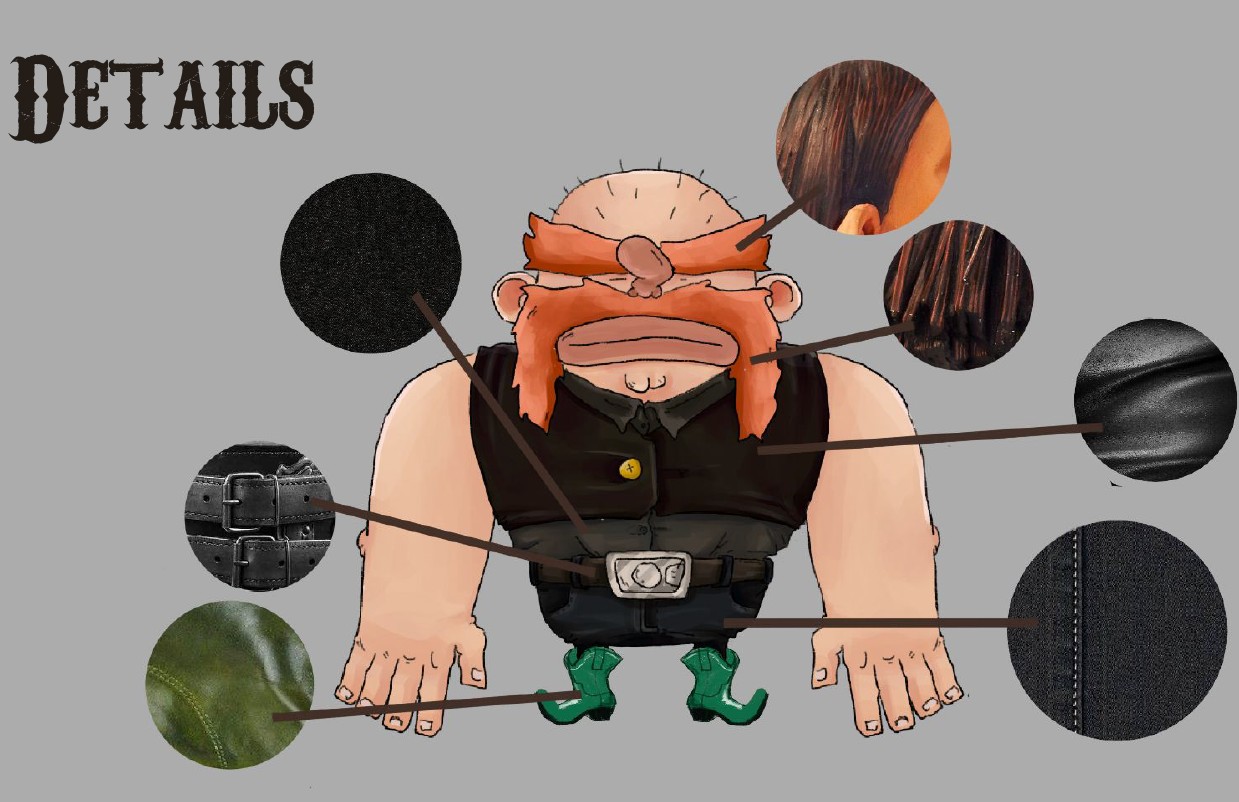
It’s a choice that pays off, allowing humour to permeate every scene in this fast-paced film.
“From a technical point of view, this meant an enormous amount of work, because our characters had to be easily modulable, so that they could be duplicated as extras, while at the same time being extremely flexible to allow maximum deformation. The work on rigging was very important, and was adapted as production progressed to meet ever-growing needs.”
Major technical challenges met by a close-knit team

For the team, this project was an opportunity to apply the many lessons they had learnt in 3D animation, but also to identify the shortcomings, which had to be learnt on the job.
“Having had no layout courses throughout our five-year course, this stage was a real challenge,” recalls Jules Nouvelot-Giron.
“The number of shots we had planned, as well as the complexity of the comic-book panel system (with different perspectives, but interacting with each other) meant that we had to do a huge amount of work over a long period of time, which meant that we had to find unique software mechanisms and use different rendering engines to optimise our scenes as much as possible.
We also changed the nomenclature and organisation of our cameras, because of the box system, which caused some difficulties.”
But the real challenge was the realignment of the project, when the team chose to move from an art direction mixing CGI and comic book effects to a 100% cell-shaded approach. “This meant switching from Renderman to Arnold for our renders, and we had to start almost from scratch in terms of AD. Despite this, the team put in an enormous amount of work to achieve this tour de force, and rose to the multiple challenges posed by this project.”
With rigs that were already complex, certain scenes quickly proved impractical, especially in vast outdoor spaces. This was apparent from the very first iterations, and also prompted the team to switch from Renderman to Arnold, which was more flexible and better suited to the needs of this particular production.
“This meant that we had to replace our instances in standings during the changeover, but we were able to obtain ultra-light scenes for each sequence and shot. This transition was made much easier by various scripts developed by a member of our team. Last but not least, we had a lot of problems with our main character’s mouth, due to a feature that we never actually used,” concludes Jules Nouvelot-Giron.
“Building a network is crucial”.
Despite all his energy and hard work, Jules Nouvelot-Giron takes a pragmatic view of this project, in which he has invested so much. If he had it to do over again, there’s no doubt that the former student would now be putting even more madness and inventiveness into the project.
Today, Jules places particular emphasis on the importance of developing his professional network at the same time, which he feels is even more decisive than the short film he made at the end of his studies. In a sector where job opportunities are strongly impacted by technological developments (including AI), Jules Nouvelot-Giron stresses the importance of these contacts, which are crucial for landing a job and entering this sector.
His advice to students? Focus on the clarity of the script. A simple, strong story allows you to concentrate your energy on the animation and create a striking short film, while taking full advantage of the human adventure offered by this collective project.
Jules Nouvelot-Giron is undoubtedly pragmatic. But despite his rather harsh comments on his project, the work done on this film deserves to be acknowledged, because the team’s commitment shines through in the singular quality of this production. It’s a jubilant, no-holds-barred film, and one we urge you to see without delay. Boots and Bounties is currently on the festival circuit.
Discover Boots and Bounties, available in full on the ESMA Movies YouTube channel:
